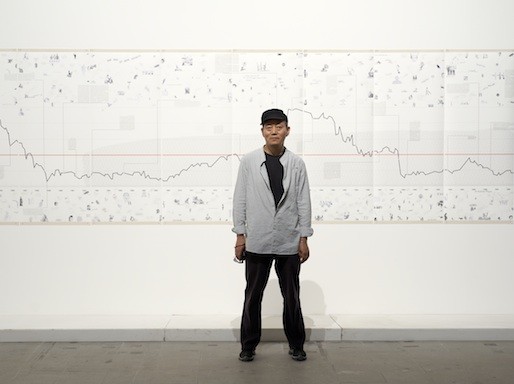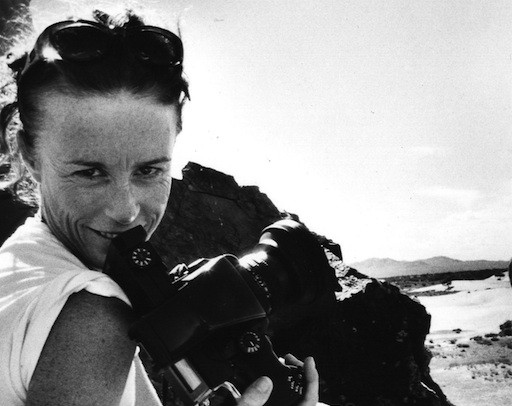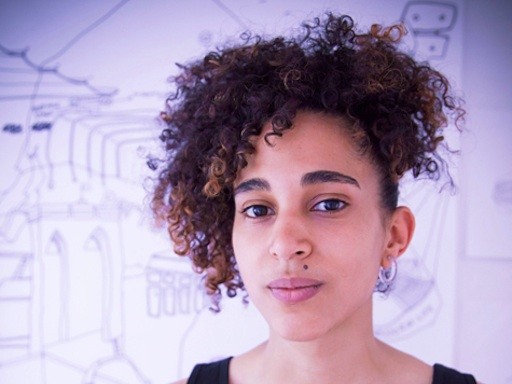Born in Tibet and now living in London, Gonkar Gyatso has become one of his native country's most visible contemporary artists through work that bridges Eastern and Western culture—and casts a skeptical eye on the pieties embraced by each. We spoke to the artist about his work, his attraction to the stickers and cartoons he employs in his compositions, and his experience growing up during the Cultural Revolution.
Your works often consist of a classical Tibetan sculpture or image of the Buddha covered in stickers referencing the mass culture of 21st century capitalism, from price tags to advertisements to characters from popular TV cartoons. How do you feel that Buddhism and this commercial—or even profane—side of life relate?
In the most overt sense the image of the Buddha is meant as a reflection of everything in the world; the height of enlightenment must be a reflection of everything it sees and tries to understand. For me the form of the Buddha acts as a container the way that a city is a container. I am inspired by urban areas where people, ideas, and things coexist and sometimes clash. My process has become my own way of making sense of the world and each piece acts as kind of private meditation.
You came of age during the Cultural Revolution in China, a period that saw the systematic suppression of both traditional Tibetan religious art forms and Western culture, which was counter to Maoist ideology. To varying degrees, your art incorporates elements from both of these formerly banned traditions and often appears to be commenting on Western or global mass-media culture. Do you believe capitalist culture is eroding traditional Tibetan art forms, or is something else going on?
The funny thing is that capitalism erodes one side of tradition but, through its desire to grow, promotes another side of culture. People can argue that new, more materialistic culture is less authentic. The problem with modern practice is that its objectification of culture is often exploitative and leaves those who gave birth to the culture at the losing end. On the other side, when religious practice becomes too extreme it can be oppressive. My ideal is a co-existence between the two and I try to reflect that through my work.
How does your background in traditional Chinese ink-and-brush painting and Tibetan scroll painting play into your work?
Both are very detail-oriented, meticulous processes; to learn them takes regimented training based on memorization and repetition. To me, when looking at my work, it becomes obvious how these play into my sensibility as an artist. They also taught me discipline not just in art, but in daily life—which I need in order to be able to make a living from my art.
How did you start working with stickers?
My daughter started bringing them home from school. I was immediately inspired by the textures and colors and kind of tackiness.
Where do you source them from?
From all over. I am always collecting stickers, and people send me stickers that they want me to include in the work. I have even designed my own stickers and symbols to use.
How do you decide to use stickers you find as opposed to the ones which you design and produce yourself?
After collecting stickers for years I realized that there are no Tibetan stickers. When I am creating a collage I want to include as much information as I can so that everything gets represented. The stickers are a form of cultural representation, and different narratives are played out depending on what stickers I select.
You sometimes include popular cartoon characters in your work. Did you have any favorites growing up?
When I was growing up I never saw any cartoons, it was a closed remote society. We did have propaganda cartoons, but they were very dry and often denigrated Tibetan culture. The first real one I saw was a Japanese cartoon in the late 1980s when some of the tenants of the Cultural Revolution were relaxed, then the Western cartoons like "Tom and Jerry" and Snow White started showing up. I was drawn to the lightness and humor, which are important parts of my work now.
Your work frequently deals with notions of hybridization and identity, and you yourself grew up in a country with a highly fragmented sense of identity. Today you are a British national. How do you self-identify?
Emotionally and ethnically I am Tibetan, but socially and politically I feel British, since Britain is the country that granted me citizenship and gave me rights and a sense of national belonging.
What made you want to become an artist?
I was always good at drawing. After middle school I started working at a museum in Tibet and developed an awareness of artists and designers and eventually got recruited to go to art school in Beijing. It's the only thing I am really good at.
How do you get your creative juices flowing?
I watch a lot of movies and kind of hibernate. Also, having a routine often helps me focus, and that focus and discipline help me think.
Where do you look for inspiration?
The street, the movies, radio, TV, magazines—all media. That’s why I love cities: there’s so much to watch and absorb. It all gets reflected back into my work.
What do you hope people get out of your artwork?
I want my work to be beautiful to look at and experience, but I also want people to be provoked in some way.
What would you be doing if you weren't an artist?
That changes often. I’d love to be a dancer or musician, and I even wanted to be a solider at one point, but only because I love the uniforms. I’ve thought about being a doctor, a horticulturalist, or even a farmer.
What is indispensable in your studio?
A radio, a nice pot of tea, access to Netflix, BBC, NPR, a popcorn machine, and cute assistants.
What do you collect yourself?
I collect my fellow Tibetans' artwork, stickers, and plastic toys.
Do you think that it's okay to break the law for the sake of art?
Totally, as long as you are cautious.
What is your favorite place to see art?
I would rather be at the market, in a bookstore, or downtown than somewhere looking at art.
Meet the ArtistTibetan Artist Gonkar Gyatso on Using Stickers to Battle Oppression
























